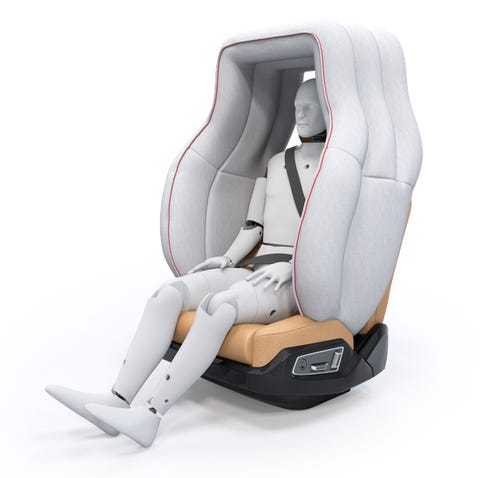October’s issue includes our annual 20 Questions feature. You can find this and 19 other questions–and answers–there.
For years, automotive executives, suppliers, and regulators have promised that autonomous tech will prevent the vast majority of crashes. But even though computers are more reliable than humans, automated driving systems can’t and won’t eliminate all accidents.
Tomorrow’s cars will crash on occasion, and injuries will happen. But our best defense—the trusty airbag—may not work so well to protect us if the open-plan interiors we’ve seen on concept cars become a reality. The airbag is going to need a reboot.
Modern airbags make early examples from the ’70s look primitive. They receive inputs from dozens of safety sensors to adjust inflation based on occupant size, seat position, seatbelt use, and crash severity, and they are strategically placed around our seats to protect our thoraxes, pelvises, necks, and knees in the event of a crash. But these airbags are designed for people sitting in forward-facing upright positions, not for someone who is lying down or facing the back seat—two proposed cabin designs for automated vehicles.
Anticipating this imagined future, Swedish supplier Autoliv has devised a prototype airbag that would protect occupants no matter their orientation. Called the Life Cell, this single-piece airbag shoots out from the headrest and side bolsters of each seat, forming a cushioned shell—sort of like a balloon chair—around the passenger’s upper body. It’s a smart design, but much like Level 5 autonomy, we don’t expect to see it in production vehicles for some time; the Life Cell is still in the development phase.
More 20 Questions
This content is created and maintained by a third party, and imported onto this page to help users provide their email addresses. You may be able to find more information about this and similar content at piano.io


